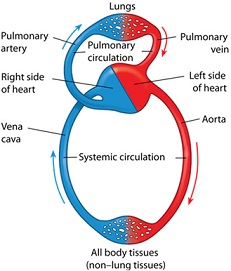7th Grade > Biology
TRANSPORTATION IN ANIMALS AND PLANTS MCQs
Answer the follwoing questions: [5 MARKS]
1.Where is urine formed?
2. Where is urine stored?
3. Which part of the excretory system is responsible for the transport of urine from the kidneys to the bladder?
4. What is the normal composition of urine?
5. What is the major excretory product in humans?
:
Each answer: 1 Mark
1. Urine is formed in the kidneys.
2. Urine is stored in the urinary bladder.
3. The ureters transport the urine formed in the kidneys to the bladder.
4. The normal composition of urine is consists of 95% of water, 2.5 % of urea and 2.5% of other waste products.
5. The major excretory product in humans is urea.
:
A, B, and C
A plant takes in carbon dioxide essential for photosynthesis through the stomata. Stomata expels out the oxygen produced during photosynthesis. They also release water that is absorbed by the roots in the form of water vapour. And this process is called transpiration. The sunlight is absorbed by the chlorophyll that is present in the leaf.
:
A
Kidneys are a pair of organs present behind the abdominal cavity in either side of the backbone in humans. It is the major excretory organ in the human body. Its main function is to filter waste and excess fluid from the blood and production of urine.
:
A
The platelets form a meshwork and release blood clotting chemicals at the site of injury and prevent further bleeding. If there is a decrease in platelet count in the blood, then the blood will not be able to clot.
:
C
- Blood is mainly composed of two components- plasma and blood cells.
- Plasma is yellow coloured fluid part of the blood.
- Blood cells are of three types- RBCs, WBCs and platelets.
- RBCs are red in colour due to haemoglobin and functions in transport of gases.
- White blood cells and platelets are colourless. WBCs are involved in defense mechanism, while platelets participate in blood clotting.
- So, if we have only white blood cells in our body then the colour of the blood will be yellow due to colour of the plasma, since WBCs and platelets are colourless.
:
B
Arteries carry blood rich in oxygen, except the pulomonary artery which carries deoxygenated blood. Veins carry blood rich in carbon dioxide, except pulmonary veins which carry oxygenated blood. Hence the statement is incorrect.
:
B
William Harvey was the first person to describe the circulation of blood in the body. He showed that arteries and veins form a complete circuit. The circuit starts at the heart and leads back to the heart. The heart's regular contractions drive the flow of blood throughout the whole body.
:
B
Arteries are large blood vessels that carry blood from the heart to all parts of the body. For the blood to reach all parts of the body, heart pumps blood at a high pressure into the arteries. Veins, on the other hand carry deoxygenated blood from various body parts to the heart. In veins, the blood flows slowly. Hence, arteries have to be thicker than veins to withstand such high pressure.
:
B
∙ Human heart consists of 4 chambers. The two upper chambers of the heart are called atria and the two lower chambers are called ventricles.
∙ Arteries are the blood vessels that carry oxygenated blood from the heart to all parts of the body.
∙ Veins are the blood vessels that carry deoxygenated blood back to the heart from all parts of the body.
:
A and C
- Heart pumps the oxygenated blood to all parts of the body, while the deoxygenated blood is brought back to the heart.
- This deoxygenated blood is now pumped from the heart to the lungs to get oxygenated again.
- The oxygen rich blood is then brought back to the heart from the lungs. Blood then enters the left atrium and then passes to the left ventricle.
- The blood from the left ventricle is pumped into another blood vessel, called aorta. The aorta pumps this oxygenated blood to all parts of the body.

















